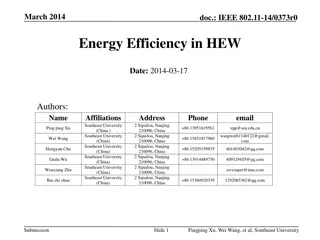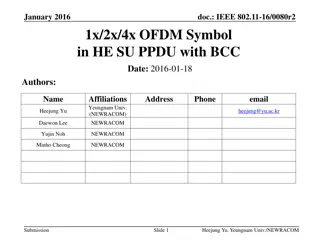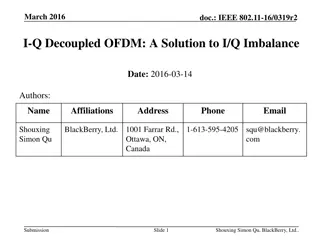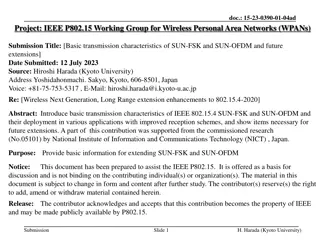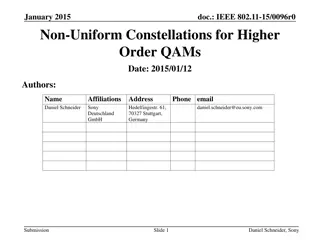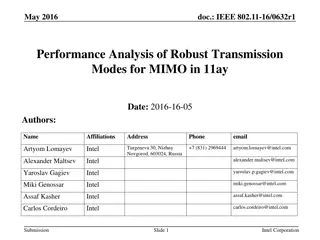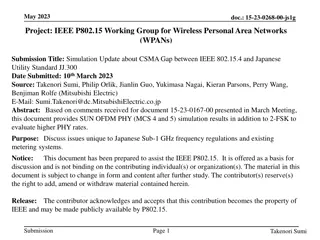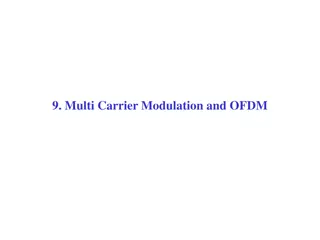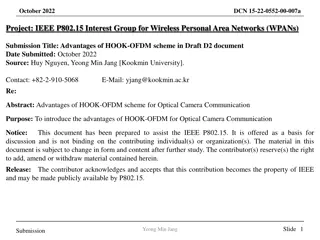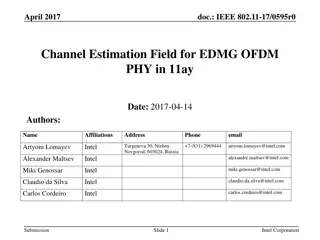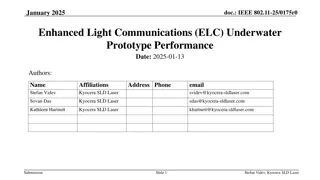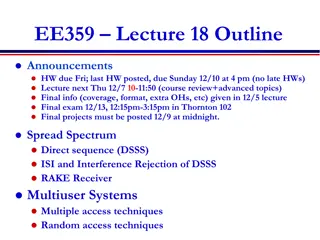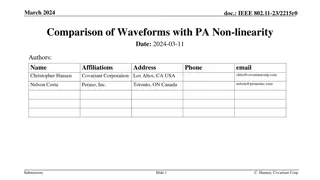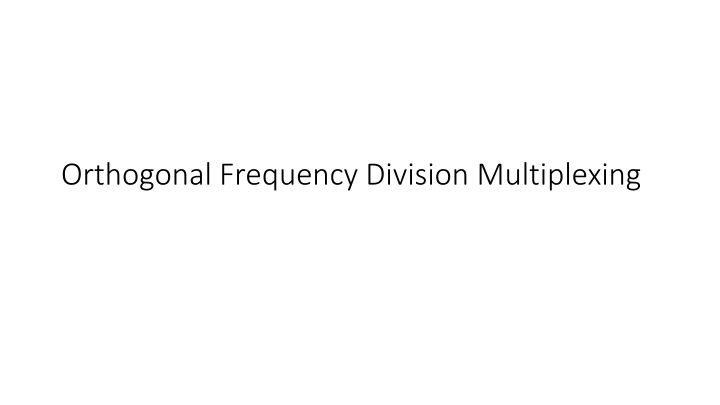
Orthogonal Frequency Division Multiplexing
Learn about Orthogonal Frequency Division Multiplexing (OFDM) and its basics, advantages, and disadvantages. OFDM is a technique that uses multiple narrow-band subcarriers to efficiently transport information. It is commonly adopted in various standards like DSL, 802.11a, digital audio broadcasting, and digital video broadcasting. Discover how OFDM deals with multi-path scenarios, its robustness against narrow-band interference, and the challenges it faces with frequency offset and phase noise.
Download Presentation

Please find below an Image/Link to download the presentation.
The content on the website is provided AS IS for your information and personal use only. It may not be sold, licensed, or shared on other websites without obtaining consent from the author. If you encounter any issues during the download, it is possible that the publisher has removed the file from their server.
You are allowed to download the files provided on this website for personal or commercial use, subject to the condition that they are used lawfully. All files are the property of their respective owners.
The content on the website is provided AS IS for your information and personal use only. It may not be sold, licensed, or shared on other websites without obtaining consent from the author.
E N D
Presentation Transcript
Basics: Frequency of Signals Sinusoidal signals have a distinct (unique) frequency An arbitrary signal does not have a unique frequency but can be decomposed into many sinusoidal signals with different frequencies, each with different magnitude and phase The spectrum of a signal refers to the plot of the magnitudes and phases of different frequency components The bandwidth of a signal is the spread of the frequency components with significant energy existing in a signal Fourier series and Fourier transform are ways to find spectrums for periodic and aperiodic signals, respectively
Using a large number of parallel narrow-band subcarriers instead of a single wide-band carrier to transport information
Regular FDM single carrier Orthogonal-FDM Same amount of water is coming from a lot of small streams
Advantages Very easy and efficient in dealing with multi-path Robust again narrow-band interference Disadvantages Sensitive to frequency offset and phase noise Issues with the power efficiency of RF amplifier at the transmitter Adopted for various standards DSL, 802.11a, Digital audio broadcasting, digital video broadcasting
The area under a sine and a cosine wave over one period is always zero.
A harmonic of a sinusoidal wave is a wave with a frequency that is a positive integer multiple of the frequency of the original wave Original wave also called fundamental frequency or the 1st harmonic The following harmonics are known as higher harmonics As all harmonics are periodic at the fundamental frequency, the sum of harmonics is also periodic at that frequency.
Example We can then pick any modulation scheme of interest, e.g., BPSK, 8PHSK, 32-QAM
Subcarrier 1 (c1) and the bits it is modulating Frequency 1Hz Bin 1 Bin2 Subcarrier 2 (c2) and the bits it is modulating Frequency 2Hz Bin 3 Subcarrier 3 and the bits it is modulating Frequency 3Hz Bin 4 Subcarrier 4 and the bits it is modulating Frequency 4Hz
A fading channel has frequencies that do not allow anything to pass. Data is lost sporadically. The signal we want to send and the channel frequency response are well matched Advantages in a channel with frequency selective fading response OFDM uses many little subcarriers, so only a small subset of the data is lost due to fading. Only two subcarriers are affected


